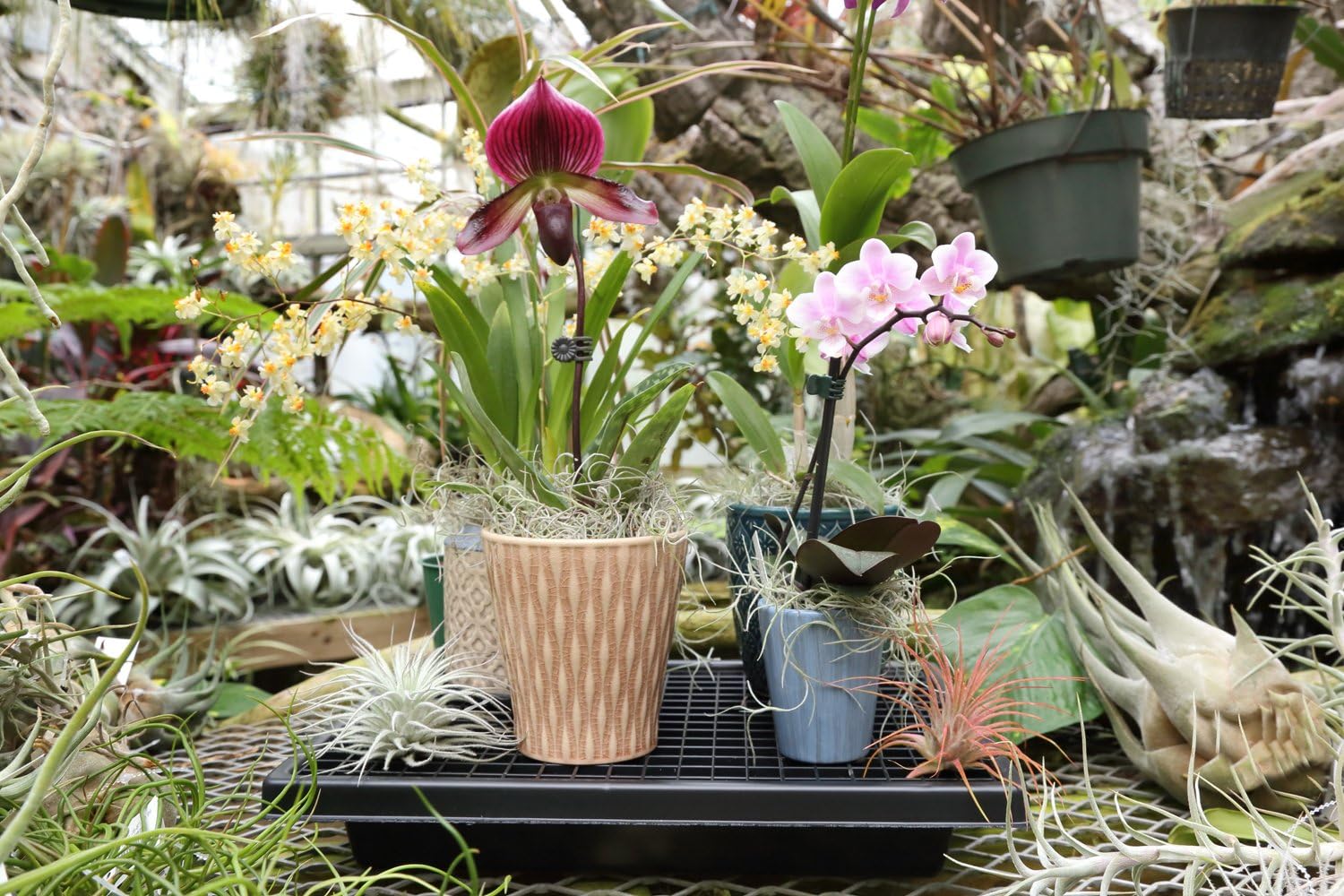- Home
- Orchid Diseases
Orchid Diseases
Orchids, with their enchanting allure, hold a special place in the hearts of plant enthusiasts worldwide. Yet, to ensure their continued radiance and vitality, it is important to confront the potential hurdles they may encounter, particularly in the form of orchid diseases. Familiarizing ourselves with these ailments becomes essential in order to provide optimal care and safeguard our precious orchids.
From the menacing crown rot to the notorious leaf spot diseases, treacherous root rot, insidious orchid virus diseases, and pesky fungal infections, a diverse array of orchid diseases can disrupt their growth and overall well-being. By acquiring knowledge about the causes, symptoms, and repercussions of orchid disease, we enable ourselves to take preemptive actions, implement preventative strategies, and administer appropriate treatments. Within this comprehensive guide dedicated to the realm of orchid disease, we intend to provide you with invaluable insights and practical advice, allowing you to guard the health and resilience of your cherished orchid collection.
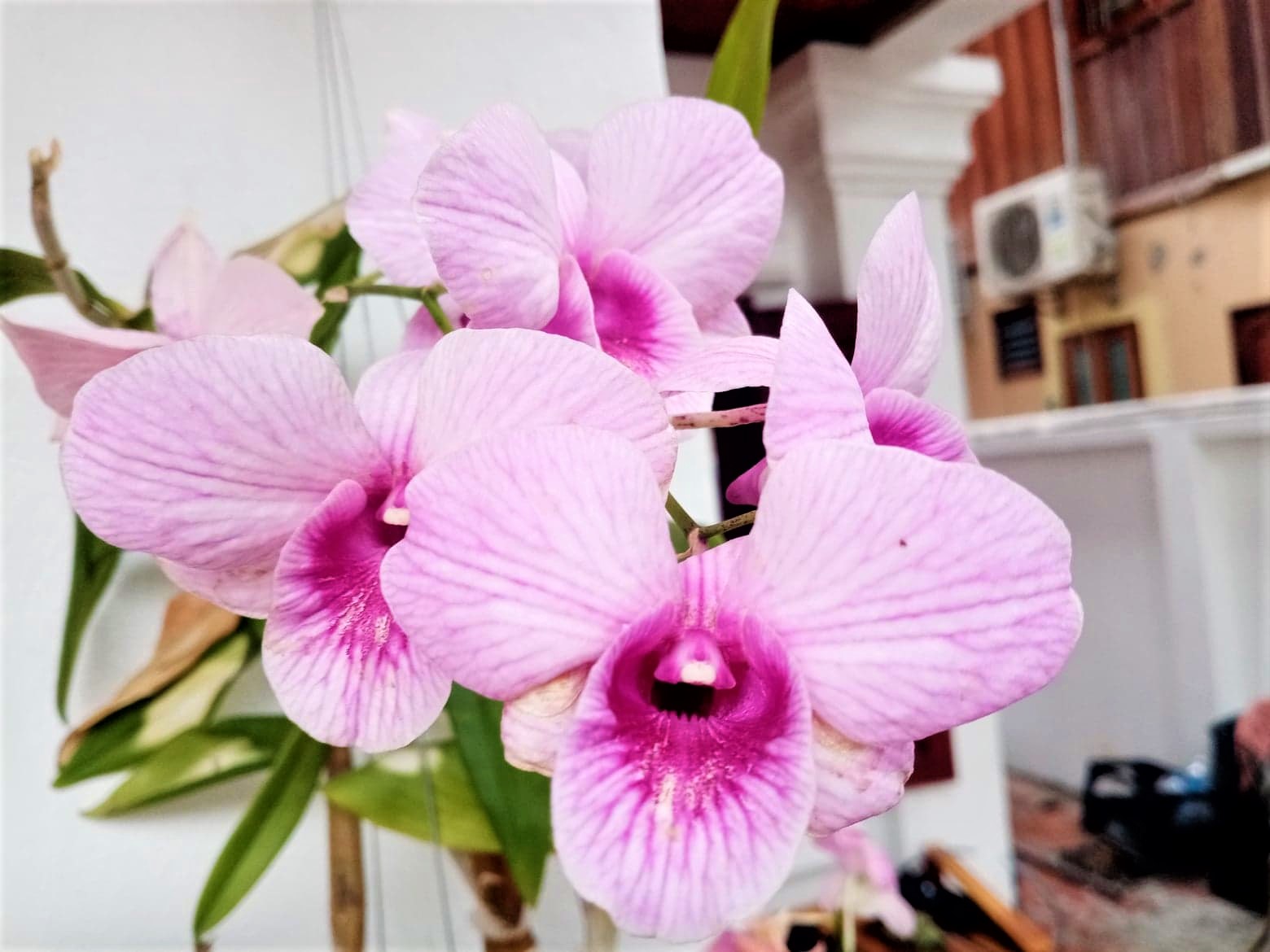
Understanding Orchid Disease
Orchid diseases encompass a range of ailments that can affect the health and vitality of these beautiful plants. From crown rot to leaf spot diseases, root rot, orchid virus diseases, and fungal infections, these conditions can have a profound impact on the well-being and growth of orchids. It is essential to recognize and comprehend these diseases to ensure optimal care and protection for our botanical treasures. By delving into the causes, symptoms, and effects of orchid diseases, we can take proactive measures, implement preventive strategies, and apply appropriate treatments. This comprehensive understanding is crucial for preserving the beauty and resilience of orchids for years to come.
The significance of early detection, prevention, and proper care cannot be overstated when it comes to orchid diseases. Swift identification of symptoms and prompt action are essential for mitigating the negative effects of these diseases. Regular inspection and monitoring of orchids enable us to catch any signs of distress or disease in their early stages. This allows for timely intervention, preventing the spread of pathogens and minimizing damage to the plants. By implementing proper care practices, such as providing adequate air circulation, maintaining proper moisture levels, and avoiding overfertilization, we create an environment that supports orchid health and resilience, reducing the likelihood of disease occurrence.
Orchids are susceptible to a variety of diseases, making it imperative for growers and enthusiasts to be aware of the potential risks. Some common diseases that can afflict orchids include bacterial and fungal infections, such as black rot and brown spot. Viral diseases, such as orchid fleck virus and cucumber mosaic virus, can also pose a threat to orchid health. Additionally, root-related issues like root rot and crown rot can significantly impact the overall well-being of orchids. Understanding the range of diseases that orchids can be susceptible to empowers us to take proactive measures to prevent their occurrence and ensure the long-term health and vibrancy of these remarkable plants.
Common Orchid Diseases:
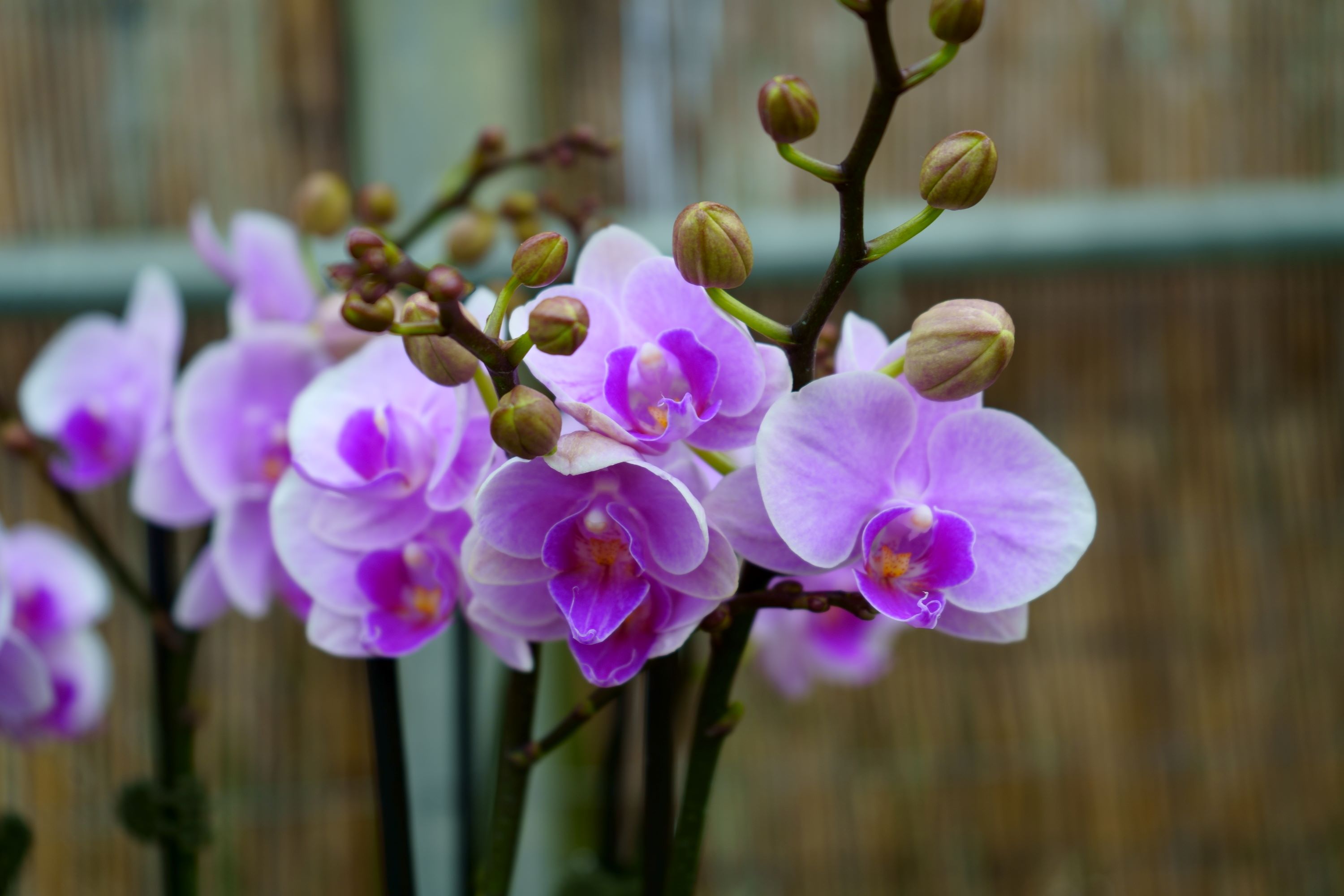
Crown Rot
Crown rot is a prevalent disease that can have detrimental effects on orchids if left unchecked. This insidious condition primarily affects the crown of the plant, where the leaves emerge. Understanding its causes, symptoms, and potential consequences is crucial for orchid growers to safeguard the health and vitality of their cherished plants.
Crown rot can be caused by various factors, including excessive moisture, poor air circulation, and fungal or bacterial infections. The first signs of crown rot often manifest as a softening or discoloration of the crown tissue. As the disease progresses, affected orchids may exhibit wilting, yellowing leaves, and a foul odor. If left untreated, crown rot can lead to the death of the entire plant, robbing us of its beauty and grace.
Prevention and management techniques play a pivotal role in combating crown rot and preserving the well-being of orchids. To prevent crown rot, it is essential to ensure proper air circulation and avoid overwatering. Orchid pots should have sufficient drainage, and water should be allowed to drain completely after watering. Additionally, maintaining a suitable humidity level and providing adequate spacing between plants can help minimize the risk of crown rot.
When managing crown rot, the first step is to remove any affected tissue promptly. Trim away any mushy or discolored portions of the crown using sterilized tools. It is crucial to disinfect the tools between cuts to prevent further spread of the disease. Afterward, applying a fungicide specifically formulated for orchids can help control the infection. However, prevention remains the best approach, as early intervention and proactive care practices significantly increase the chances of overcoming crown rot and preserving the health of our beloved orchids.
Leaf Spot Diseases
Leaf spot diseases are a common affliction that can affect the health and appearance of our beloved orchids. These diseases are caused by various fungal and bacterial pathogens that find their way onto the leaves, resulting in unsightly spots, discoloration, and potential harm to the overall vitality of the plant. Recognizing the causes, symptoms, and effects of leaf spot diseases is crucial for orchid enthusiasts to take swift action and protect their cherished blooms.
Leaf spot diseases are often caused by environmental conditions conducive to pathogen growth, such as high humidity, excessive moisture, and poor air circulation. These conditions create an ideal environment for fungal and bacterial pathogens to thrive and attack the leaves of orchids. Symptoms of leaf spot diseases typically manifest as small, circular or irregular spots on the foliage. These spots may appear discolored, ranging from yellow, brown, or black, depending on the specific pathogen involved. In severe cases, the spots may merge, causing extensive damage to the leaves and compromising the overall health of the orchid.
Preventing and managing leaf spot diseases is vital in maintaining the well-being of orchids. The first line of defense is to ensure proper care practices, including providing adequate air circulation and maintaining optimal humidity levels. Watering should be done carefully, avoiding wetting the foliage and ensuring that the growing medium is not excessively damp. Additionally, practicing good sanitation by removing any fallen leaves or debris can help minimize the risk of infection.
If leaf spot diseases do occur, early detection and intervention are crucial. Affected leaves should be promptly removed and disposed of properly to prevent the spread of pathogens. It is important to sterilize any tools used during pruning to prevent further contamination. Applying a suitable fungicide or bactericide can also help control the infection, but it is essential to follow the product instructions carefully and ensure compatibility with orchids.
By implementing preventive measures and promptly addressing leaf spot diseases, orchid enthusiasts can safeguard their plants from the detrimental effects of these common afflictions. Regular observation, proper care, and a proactive approach to disease management will help keep our orchids thriving and exhibiting their vibrant beauty.
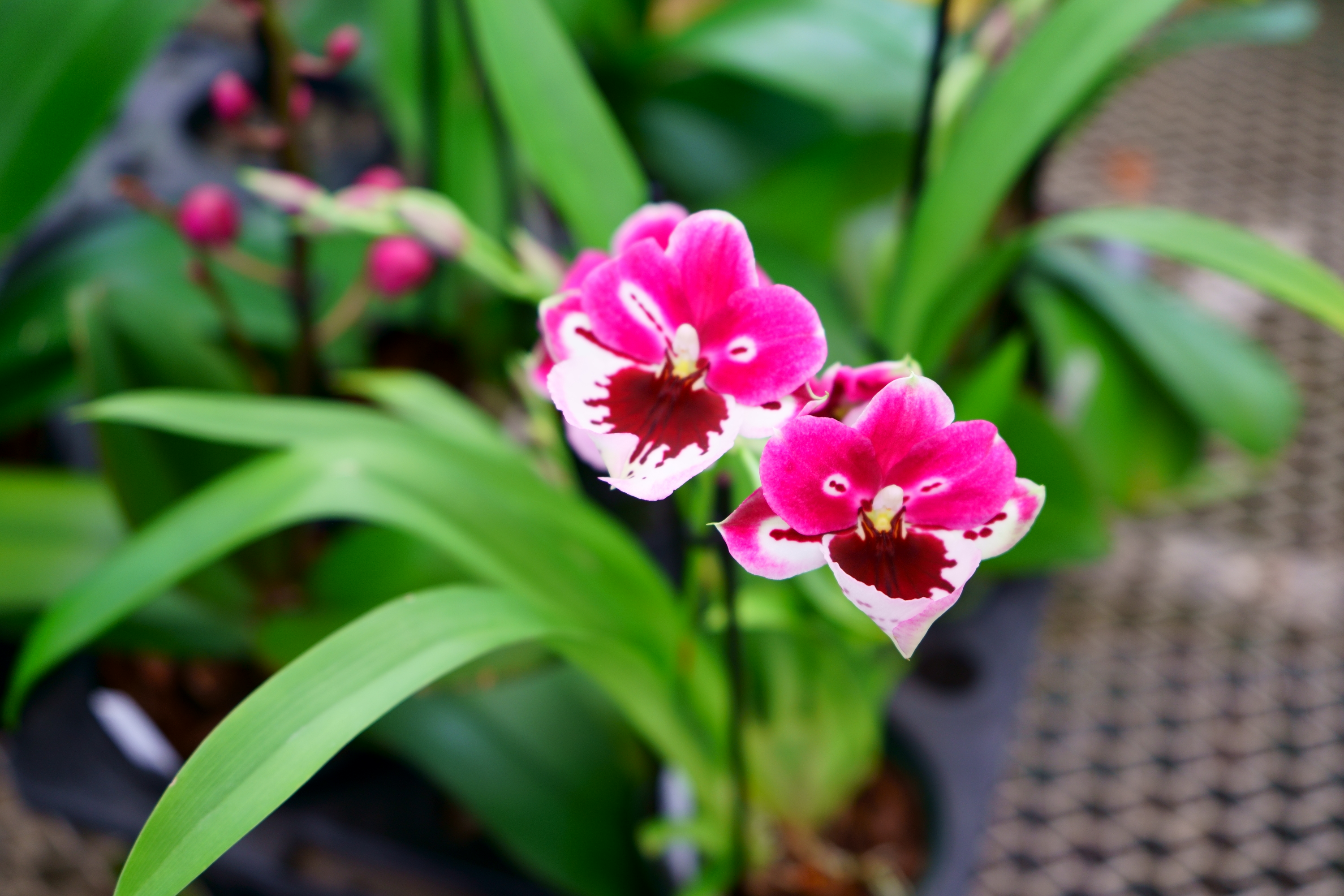
Root Rot
Root rot is a distressing condition that can wreak havoc on our precious orchids. This insidious disease is primarily caused by overwatering, poor drainage, or the presence of waterlogged conditions around the roots. When the roots of orchids become saturated for extended periods, they suffocate, leading to a decline in their health and overall plant vitality. Understanding the causes, symptoms, and effects of root rot is essential for orchid enthusiasts to effectively combat this silent destroyer.
The primary cause of root rot in orchids is excessive moisture around the roots, depriving them of much-needed oxygen. When the growing medium remains consistently wet, it becomes a breeding ground for harmful fungi, such as Pythium and Phytophthora, which attack and decay the delicate roots. Symptoms of root rot can include darkened, mushy, or slimy roots, accompanied by a foul odor. As the disease progresses, affected roots lose their ability to absorb water and nutrients, leading to stunted growth, yellowing leaves, and an overall decline in the plant's vigor.
Preventing and managing root rot is crucial to ensure the longevity and well-being of orchids. The key lies in establishing a well-draining growing medium and adopting appropriate watering practices. Orchids prefer a balance between moisture and aeration. Allowing the growing medium to dry out partially before watering again can help prevent excessive moisture retention. Additionally, using a well-draining potting mix specifically designed for orchids, such as a bark-based mixture, promotes adequate airflow and prevents waterlogging.
Proactive management of root rot involves regular inspection and monitoring of the roots. When repotting, it is essential to carefully examine the roots and remove any diseased or decaying portions. Trimming the affected roots with sterile tools can help prevent further spread of the disease. Applying a fungicide or bactericide formulated for root rot control may also be necessary to combat the pathogens causing the infection. However, it is crucial to follow the product instructions and avoid excessive use to prevent harm to the orchid.
By taking preventative measures, such as ensuring proper drainage and implementing appropriate watering practices, orchid enthusiasts can minimize the risk of root rot. Vigilance in detecting early signs of the disease and promptly addressing them can significantly increase the chances of successful management. Remember, maintaining a healthy root system is paramount to the overall well-being and vibrant beauty of our treasured orchids.
Orchid Virus Diseases
Orchid virus diseases pose a significant threat to the health and vitality of our beloved orchids. These microscopic invaders, mainly transmitted through mechanical means such as contaminated tools or sap-feeding insects, can wreak havoc on the delicate systems of orchid plants. Understanding the causes, symptoms, and effects of orchid virus diseases is crucial for orchid enthusiasts to protect their prized plants from these invisible assailants.
The primary cause of orchid virus diseases is the introduction of viral particles into the plant's system. This can occur through various means, such as using infected tools or through the feeding activities of sap-sucking insects like aphids or thrips. Once inside the plant, the virus replicates and spreads, compromising the plant's ability to function properly. Symptoms of orchid virus diseases can vary, ranging from subtle discoloration and streaking on the leaves and flowers to more severe effects like distortion, stunting, and reduced vigor. Some viruses can even affect the plant's reproductive structures, leading to deformities and infertility.
Preventing and managing orchid virus diseases requires a multi-faceted approach to minimize the risk of infection and control the spread of viruses. One key aspect is maintaining strict hygiene practices in orchid care routines. This includes regularly sanitizing tools and equipment, such as clippers and pots, to prevent the inadvertent transmission of viral particles. Quarantining newly acquired orchids before introducing them to the rest of the collection is also crucial to avoid introducing potential sources of infection.
Implementing effective pest management strategies is another vital component of preventing orchid virus diseases. Sap-feeding insects, like aphids and thrips, can act as vectors for viral transmission. Monitoring for and promptly addressing infestations can help reduce the risk of virus transmission. Regularly inspecting plants for signs of pests and promptly treating affected plants with appropriate insecticides or employing biological control methods can help minimize the presence of virus-carrying insects.
When it comes to managing orchid virus diseases, unfortunately, there is no cure. Infected plants should be promptly isolated and removed from healthy orchids to prevent further spread. Thoroughly cleaning and disinfecting the growing area, tools, and any other potential sources of contamination is crucial to limit the risk of reinfection. Maintaining optimal growing conditions, including providing adequate light, proper air circulation, and balanced nutrition, can help strengthen the overall health of orchids, making them more resilient against diseases.
By adopting preventive measures such as strict hygiene practices, vigilant pest management, and maintaining optimal growing conditions, orchid enthusiasts can minimize the risk of orchid virus diseases. Additionally, regular monitoring and early detection of symptoms can help mitigate the impact of infections. Remember, a proactive approach and dedication to orchid health are vital in safeguarding these magnificent plants from the threat of virus diseases.
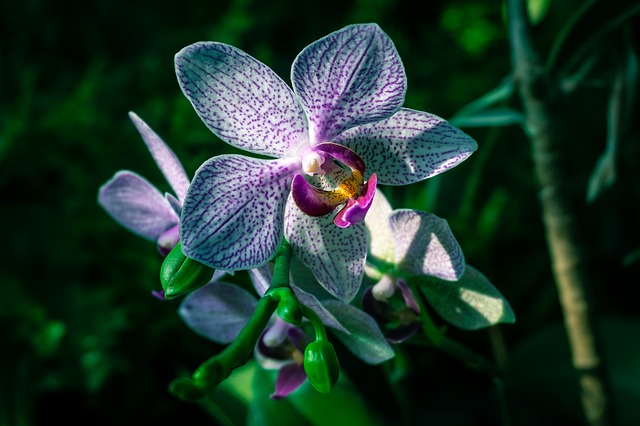
Orchid Fungal Diseases
Orchid fungal diseases can cast a shadow of concern over the vibrant world of orchid cultivation. These insidious fungi, opportunistic invaders lurking in the corners of our greenhouses, can pose a serious threat to the health and beauty of our treasured orchids. Understanding the causes, symptoms, and effects of these fungal diseases is paramount to safeguarding our orchid collections and ensuring their long-lasting vitality.
The causes of orchid fungal diseases can be attributed to a variety of factors, including improper growing conditions, high humidity, poor air circulation, and inadequate drainage. These conditions create a welcoming environment for fungal spores to settle and proliferate. Once established, the fungi attack various parts of the orchid, including leaves, stems, and roots. Symptoms of fungal diseases can manifest in several ways, such as leaf spots, discoloration, wilting, rotting, and the appearance of powdery or fuzzy growths. If left unchecked, the effects of these fungal invaders can be devastating, leading to weakened plants, stunted growth, and even plant death
Preventing and managing orchid fungal diseases requires a holistic approach that addresses the underlying causes and focuses on creating an inhospitable environment for fungal growth. Adequate air circulation and ventilation are crucial to keep humidity levels in check and discourage fungal spores from settling on the orchid's surfaces. Maintaining proper watering practices, such as allowing the growing medium to dry out between waterings, can help prevent the accumulation of excess moisture that fuels fungal growth. It is also essential to provide orchids with suitable growing conditions, including the right temperature and light levels, to promote their overall health and resilience against fungal attacks.
Employing good sanitation practices is another fundamental aspect of preventing fungal diseases in orchids. Regularly cleaning and disinfecting tools, pots, and other equipment can minimize the risk of introducing fungal spores to healthy plants. Additionally, promptly removing and disposing of infected plant material is crucial to prevent the spread of fungal pathogens. Quarantining newly acquired orchids and thoroughly inspecting them for any signs of fungal infection before integrating them into the collection can help safeguard the overall health of existing plants.
When faced with fungal diseases, swift and targeted management techniques are key. Pruning and removing infected plant parts can help prevent the spread of fungal spores to healthy tissue. Applying fungicides specifically formulated for orchids, following the manufacturer's instructions, can aid in controlling fungal infections. Organic alternatives such as neem oil or copper-based fungicides can also be effective options. Regular monitoring and early detection of fungal symptoms are crucial to promptly intervene and implement appropriate management strategies.
In the battle against orchid fungal diseases, a proactive approach that emphasizes preventive measures and attentive care is essential. By creating an environment that discourages fungal growth, practicing good sanitation, and promptly addressing any signs of infection, orchid enthusiasts can safeguard their cherished plants and revel in the enduring beauty of these remarkable floral treasures.
Importance of Preventive Measures for Orchid Health
Orchids, those beautiful and mesmerizing botanical wonders, can flourish and enchant our lives with their beauty when provided with proper care and attention. One crucial aspect of orchid care that should never be overlooked is disease prevention. Implementing preventive measures not only helps safeguard the health and vitality of our beloved orchids but also saves us from the heartache of witnessing their decline due to preventable ailments.
To ensure orchid health, it is imperative to establish a solid foundation of preventive practices. First and foremost, maintaining good hygiene is paramount. Regularly cleaning and disinfecting tools, pots, and growing areas can help eliminate potential disease-causing agents. Avoiding cross-contamination by using separate tools for each orchid or sanitizing them between plants is a simple yet effective measure.
Additionally, proper watering practices play a crucial role in disease prevention. Overwatering can create a moist environment that encourages the growth of pathogens, while underwatering can lead to stress and weakened orchids that are more susceptible to diseases. Finding the balance and ensuring adequate drainage is key to preventing root rot and other water-related issues.
Tips For Preventing Orchid Disease
Maintaining proper care and hygiene for orchids is not only vital for their overall health but also instrumental in preventing the onset and spread of diseases. Here are some valuable tips to keep in mind when caring for these delicate botanical treasures:
- Regularly inspect your orchids: Conduct routine inspections to identify any signs of disease, such as discoloration, spots, or wilting leaves. Early detection allows for timely intervention and prevents the spread of diseases to other plants.
- Provide optimal growing conditions: Orchids thrive in specific environmental conditions, including the right temperature, humidity, and light levels. Research the specific needs of your orchid species and strive to replicate their natural habitat as closely as possible.
- Proper air circulation: Adequate air circulation is essential for preventing the buildup of stagnant air and excess humidity, which can contribute to the development of fungal and bacterial infections. Use fans or open windows to ensure a healthy airflow around your orchids.
- Water with care: Orchids have unique watering requirements. Avoid wetting the leaves, as this can promote the growth of fungal pathogens. Water directly at the base of the plant and allow the growing medium to dry out between waterings.
Environmental Factors to Consider for Disease Prevention
Creating a conducive environment for orchids involves taking into account various environmental factors that directly impact their health and susceptibility to diseases. By understanding and managing these factors, we can significantly reduce the risk of diseases and ensure optimal growth and bloom.
- Light intensity: Orchids have different light requirements based on their species. Providing the appropriate light intensity helps orchids maintain strong and resilient foliage, making them less susceptible to diseases. Ensure your orchids receive the right amount of light based on their specific needs.
- Temperature and humidity: Orchids thrive within specific temperature and humidity ranges. Extremes in either can weaken their immune system and make them more prone to infections. Maintain stable and suitable conditions for your orchids to promote their overall health.
- Air quality: Poor air quality can impact orchid health and make them vulnerable to diseases. Avoid exposing them to pollutants, chemicals, and excessive dust. Providing clean and fresh air circulation helps prevent the buildup of harmful pathogens.
- Growing medium and potting: Orchids require well-draining growing mediums that allow proper airflow to the roots. Using sterile and high-quality potting materials reduces the risk of introducing harmful pathogens. Regularly repotting orchids, especially when the medium decomposes, helps maintain their overall health.
Disease Management Techniques for Infected Orchids
Despite our best efforts, orchids may occasionally fall victim to diseases. When faced with an infected orchid, implementing effective disease management techniques becomes essential to prevent further damage and save the plant.
- Isolate the infected plant: Immediately isolate the infected orchid to prevent the spread of diseases to other healthy plants. Quarantine the affected orchid in a separate area until the issue is resolved.
- Identify the disease: Proper diagnosis is crucial for selecting the appropriate management technique. Research common orchid diseases and compare the symptoms exhibited by your orchid to determine the specific pathogen involved.
- Targeted treatment: Once the disease is identified, employ the appropriate treatment method. This may include the use of fungicides, bactericides, or specific cultural practices tailored to combat the particular pathogen responsible for the infection. Follow the instructions carefully and be persistent in the treatment process.
- Remove and dispose of infected plant parts: Prune and remove any infected plant parts, such as leaves, stems, or roots, to prevent the spread of pathogens. Dispose of the infected material in a responsible manner, away from healthy plants.
By prioritizing disease prevention, maintaining proper care and hygiene, considering environmental factors, and implementing effective disease management techniques, we can cultivate thriving and disease-resistant orchids. Remember, prevention is the key to ensuring the longevity and vibrancy of these captivating floral jewels.
Preventing, and Addressing Orchid Disease
In conclusion, it is crucial to grasp the significance of understanding and addressing orchid diseases. These captivating plants, with their delicate beauty and intricate blooms, require our utmost care and attention. By familiarizing ourselves with the causes, symptoms, and effects of orchid diseases, we empower ourselves to take proactive measures in safeguarding their health.
Implementing preventive measures should be a steadfast commitment for every orchid enthusiast. Let us not underestimate the power of regular inspections, proper care, and maintaining impeccable hygiene practices. By creating an environment that promotes orchid well-being, we can fortify their defenses against potential threats and mitigate the risk of diseases.
The keyword "orchid disease" reverberates with the utmost relevance in our horticultural journey. It reminds us that these remarkable plants a
re not invincible, and they rely on our stewardship to thrive. Orchid diseases can be disruptive and devastating, but with our knowledge and diligence, we have the power to protect these botanical treasures.
As we conclude our exploration of orchid diseases, let us embrace the responsibility of becoming guardians of these extraordinary plants. By understanding the complexities of their health, by implementing preventive measures, and by promptly addressing any signs of disease, we ensure a flourishing future for our orchids. Together, let us nurture their beauty, preserve their legacy, and continue to be enchanted by their timeless elegance.
